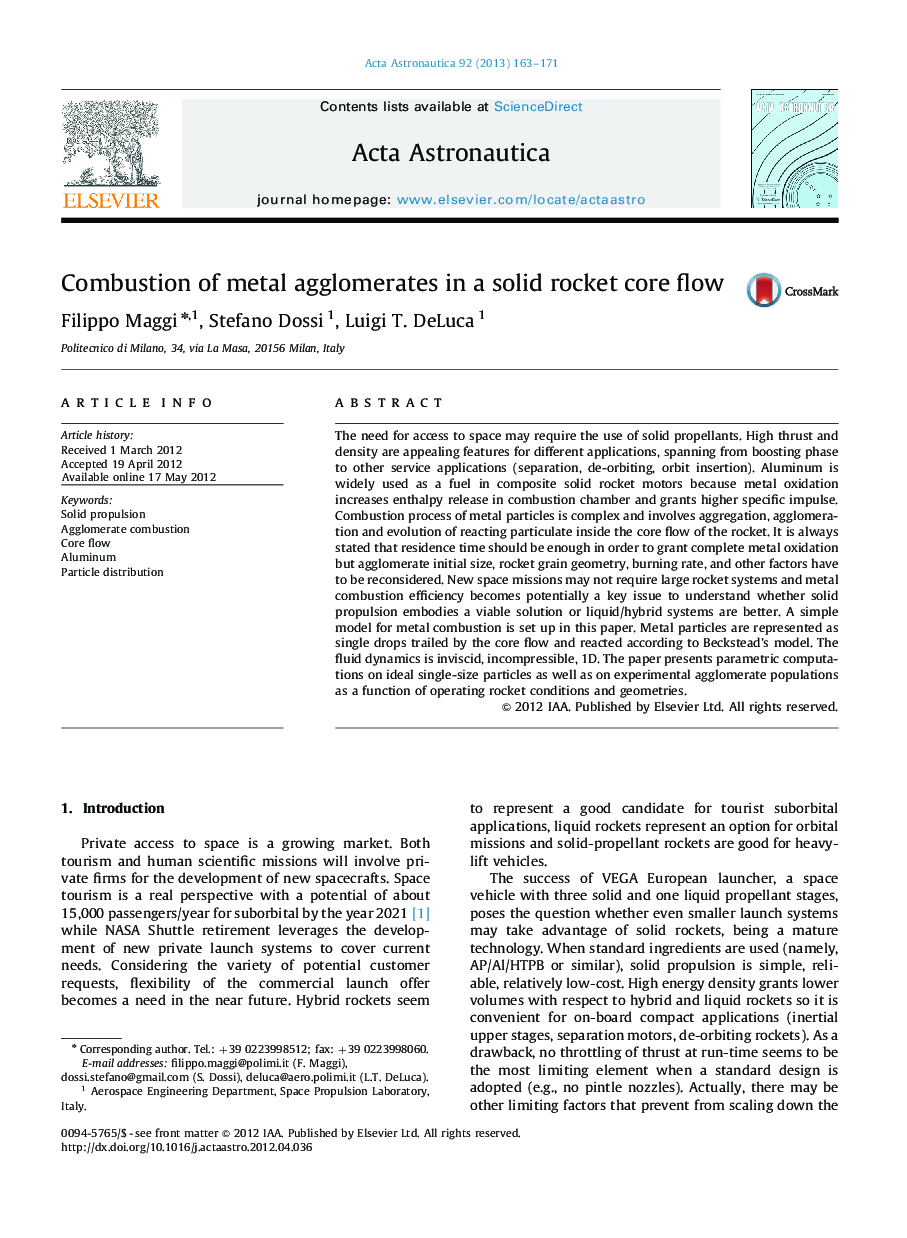| Article ID | Journal | Published Year | Pages | File Type |
|---|---|---|---|---|
| 1714839 | Acta Astronautica | 2013 | 9 Pages |
The need for access to space may require the use of solid propellants. High thrust and density are appealing features for different applications, spanning from boosting phase to other service applications (separation, de-orbiting, orbit insertion). Aluminum is widely used as a fuel in composite solid rocket motors because metal oxidation increases enthalpy release in combustion chamber and grants higher specific impulse. Combustion process of metal particles is complex and involves aggregation, agglomeration and evolution of reacting particulate inside the core flow of the rocket. It is always stated that residence time should be enough in order to grant complete metal oxidation but agglomerate initial size, rocket grain geometry, burning rate, and other factors have to be reconsidered. New space missions may not require large rocket systems and metal combustion efficiency becomes potentially a key issue to understand whether solid propulsion embodies a viable solution or liquid/hybrid systems are better. A simple model for metal combustion is set up in this paper. Metal particles are represented as single drops trailed by the core flow and reacted according to Beckstead's model. The fluid dynamics is inviscid, incompressible, 1D. The paper presents parametric computations on ideal single-size particles as well as on experimental agglomerate populations as a function of operating rocket conditions and geometries.
► Simplified model based on Beckstead's formula and metal droplet breakup. ► Effect of rocket geometry, L/D ratio and combustion pressure on agglomerate combustion. ► Experimental agglomerate size distributions used as input data to the model. ► Estimation of agglomerate size distributions entering the nozzle before expansion.
